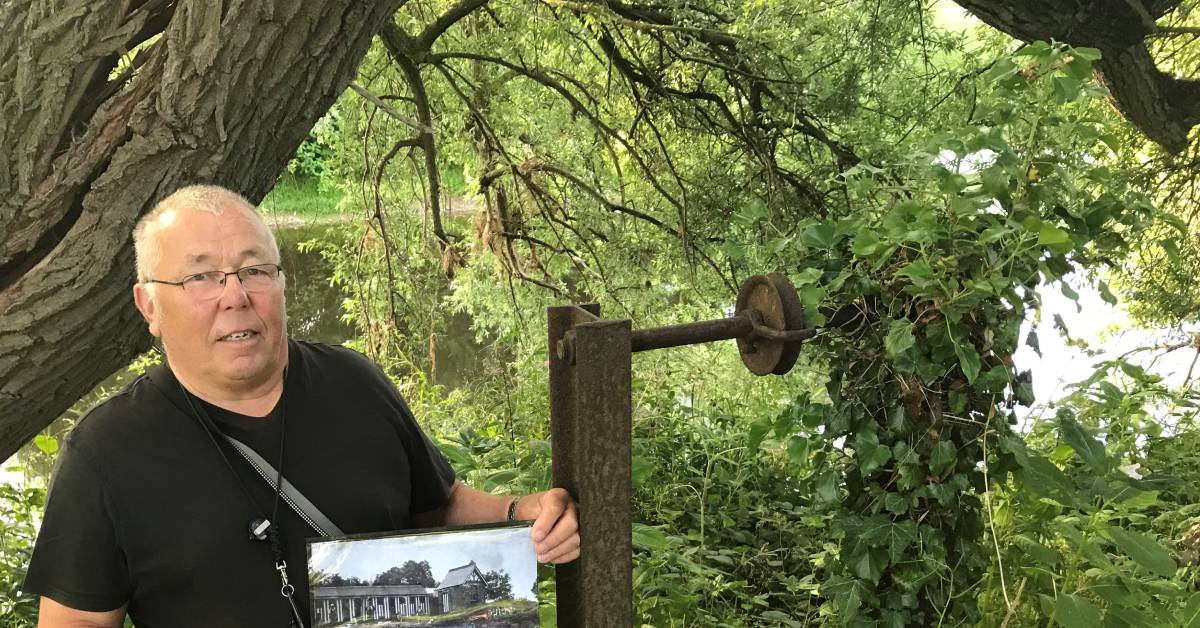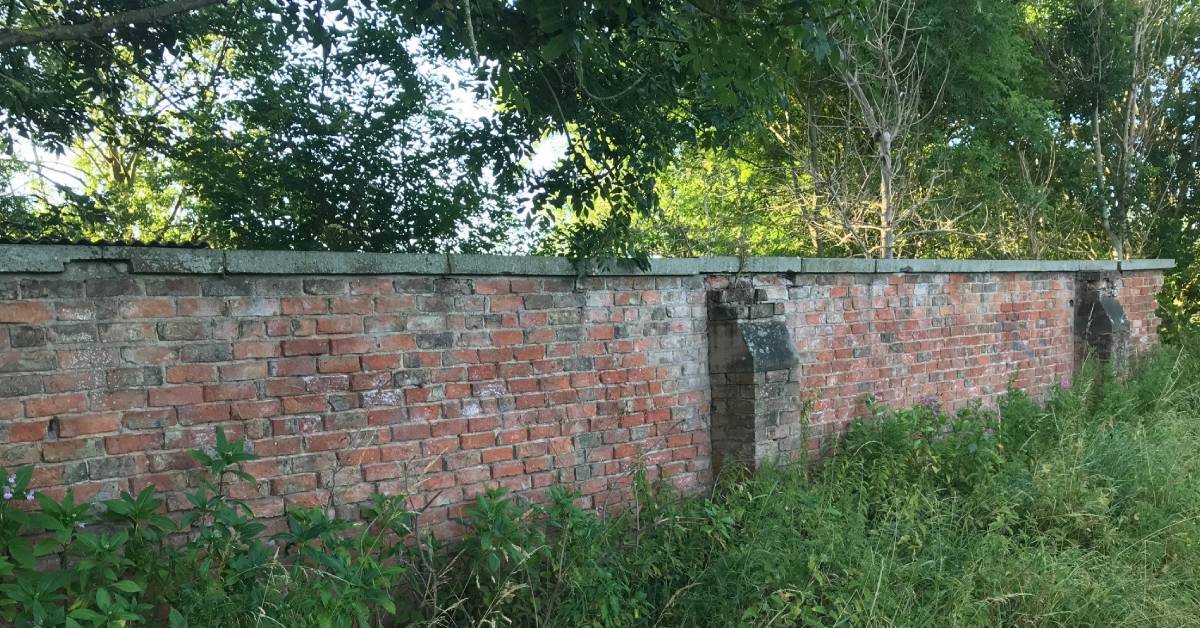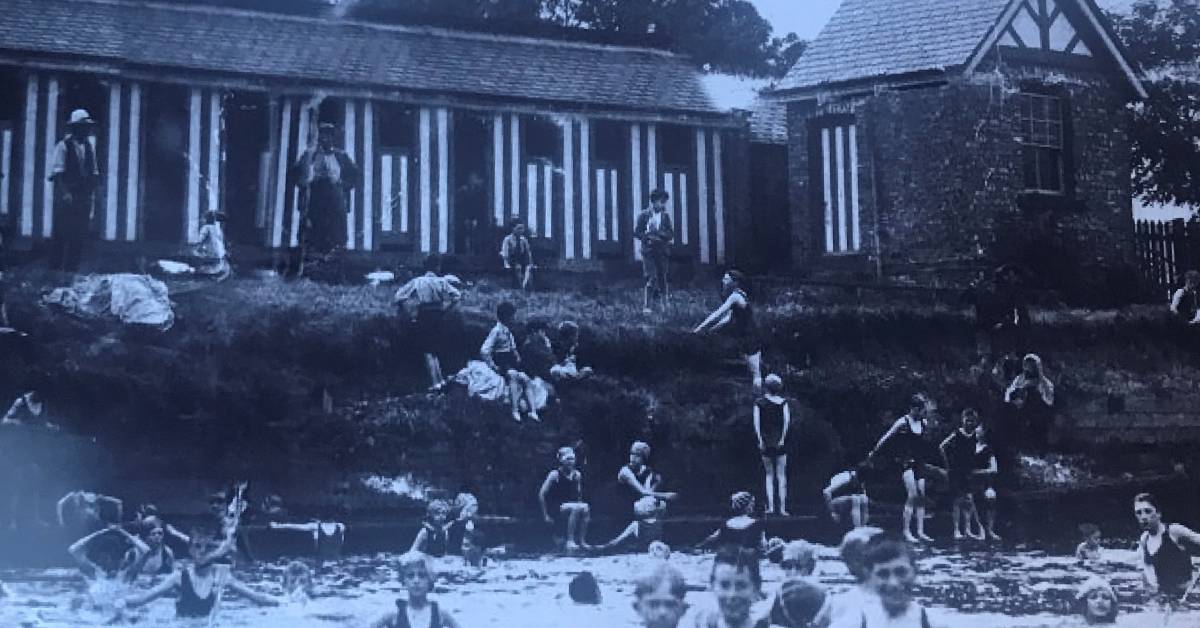Decades before Sylvia Grice MBE started teaching generations of Ripon children how to swim in the city’s Spa Baths, the lessons were more rudimentary.
Among the overgrown trees, grass and plants that crowd a bank-side section of the Ure, retired postman John Heselton, has uncovered a rusty riverside relic.
The mystery object serves as a reminder of childhood experiences in Victorian and Edwardian times that would be frowned upon in today’s more safety-conscious society.
He pointed out:
“I discovered from a couple of people in their 90s, who were among Ripon’s first ‘wild’ swimmers, that their introduction to the waters of the Ure was literally a case of sink or swim.”
With the Skell, Laver and a canal adding to Ripon’s network of natural and man-made waterways, there has always been a need to teach children and adults a skill that could one day save their life or the lives of others.

John Heselton, with a black and white photograph of the pavilion, is pictured next to the pulley that was used as a safety device.
But pre-1936, when Ripon’s first public baths were opened, how did people learn their first strokes?
Mr Heselton, pointed out:
“For novice swimmers, a rope was wrapped around their waists before they took the plunge.
“If they showed any signs of getting into difficulties, the pulley that the rope was attached to, was wound back in by the adults on the bank who arranged and supervised the regular learn to swim and swimming sessions.”
He added:
“When I was a boy I learnt to swim, like thousands of other Ripon children, at Spa Baths, but it’s remarkable to think that generations before I was born, my ancestors are very likely to have been among those taught in this more basic way.”
Though the teaching method was basic, the same does not apply to the swimming pavilion itself, which was a grand purpose-built facility, as Mr Heselton discovered.
A detail in a wall (pictured below) first indicated to him that it was more than a boundary to a riverside residence.
He said:
“I have past this structure on hundreds of occasions over half a century – first as a keen club runner and more recently while out walking my dog Ruby – but it is only in the last couple of years that I realised it is a surviving remnant of a historically-significant facility.

“After rooting through the undergrowth, I saw that at ground level the wall includes a salt-glazed course of bricks, not there to let air in, but to drain water out, when the swimmers got out of the river to change back into their clothes.”
Like all good detectives, Mr Heselton looked for further evidence on the other side of the wall and the pulley system provided another vital clue about the previous use of this area, where the Ure broadens out to form a natural lido.
The ‘sink or swim’ childhood experience was confirmed by local people he had come to know during the 20 years that he served as a postman in Ripon.
Now, the missing pieces of the jigsaw have been put into place in a fascinating compilation of facts and photographs that the history and nature lover has painstakingly assembled.
Read more:
- Ripon’s Spa Baths to be returned to its former glory
- Dean calls for council’s support for Ripon Cathedral development plan




